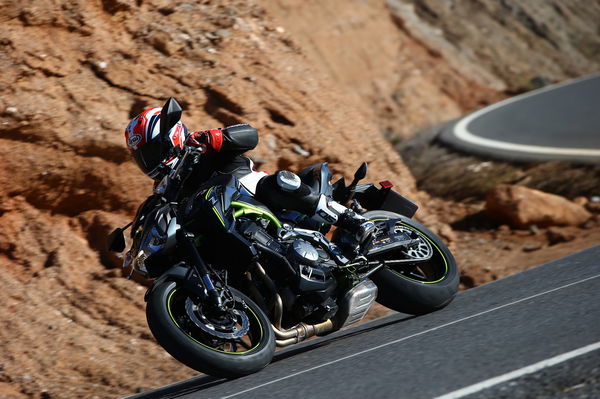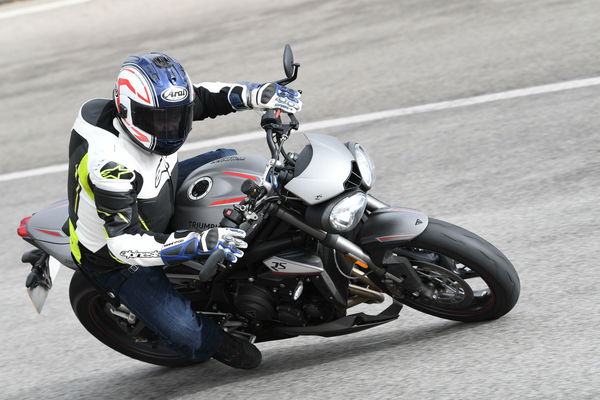First ride: BMW K1600GT review
BMW’s six-cylinder express gets even more refined for 2017
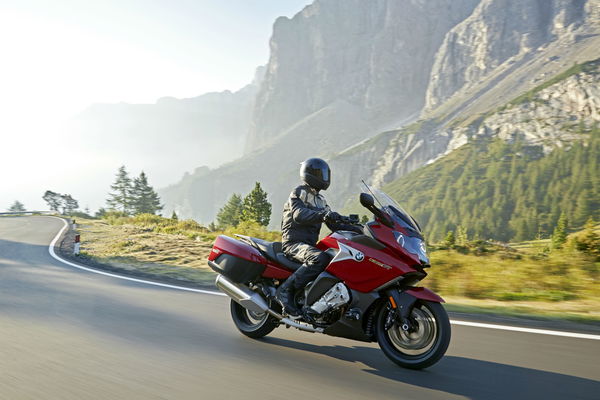
Words: Roland Brown
THIS definitely wasn’t what BMW’s development team had in mind when they’d outlined the K1600GT’s key innovation, its Intelligent Emergency Call system, and explained how cleverly it could automatically summon the ambulance service or police.
Our group of six riders had just come round a bend in the hills near Almeria in southern Spain to find a pair of Guardia Civil officers – most definitely not there at our request – directing us into a layby, where they read some of us the riot act for crossing the central white line to pass a truck, way back down the hill in the distance.
The alleged offence presumably had occurred, though even the cops didn’t pretend that our nipping past a slow-moving, smoke-belching truck with no other traffic within view had been remotely dangerous, especially on bikes with the instant, utterly effortless performance and poise of the K1600GT.
The incident confirmed that the BMW’s new hot-line to the authorities won’t always keep its rider out of trouble, but the IEC system adds yet another touch of safety and refinement to a bike that already had plenty of both.
It’s one of a number of updates to the six-cylinder sports tourer subtly enhancing the blend of performance and luxury that has defined it since its launch in 2011.
Apart from some exhaust system modifications required to meet Euro4 emission regs, there’s no change to that mighty 1649cc, DOHC 24-valve power plant. Its maximum output of 160hp at 7,750rpm remains, along with a torque curve that shows the BMW delivering 70% of the impressive peak of 129lbft before the tacho needle hits 1,500rpm.
The GT does however gain its GTL tourer sibling’s reverse gear, selected via a button on the left bar, and operated by pressing the starter button. And the big shaft-drive engine’s transmission system now comes with the option of BMW’s Shift Assistant Pro quick-shifter, which works on both up- and down-changes.
The most obvious visual change is to its fairing, notably the much larger air vents, which can manually be pulled out to catch the breeze like a pair of giant ears. They weren’t needed on a cold winter ride in southern Spain but will be welcome on a hot day. The screen is slightly larger and the fairing is reshaped, especially around the rider’s shins, where there are two small, lockable compartments, one containing a phone charger.
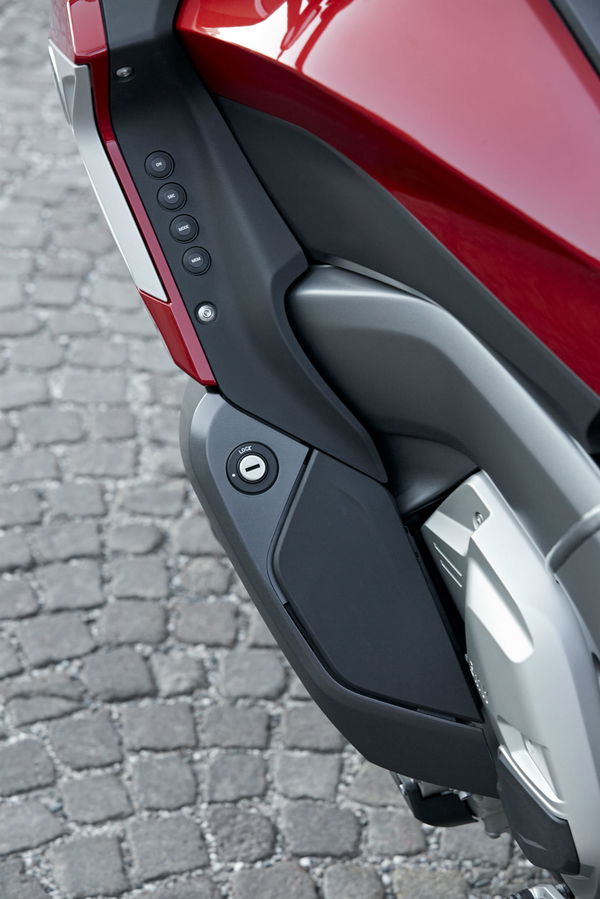
There’s no change to the aluminium beam frame but suspension is updated with a new version of BMW’s Dynamic ESA semi-active system. This optimises damping levels automatically, and can be switched between softer ‘Road’ and firmer ‘Dynamic’ settings via the click-wheel on the bike’s left bar. This system isn’t the same as the self-levelling Dynamic ESA of the latest 1200GS, as shock pre-load is still set by pressing buttons when the bike is stationary.
The semi-active system is standard fitment on the base-model K1600GT, which costs £17,205. Most other luxury features are options, although you get more thrown in with the upmarket Sport and SE models.
Top of the range is the LE, which costs £20,045 and includes BMW’s cornering Adaptive headlight, audio system, Hill Start Control, and the reverse gear. Most of the launch bikes were red or black LE models (as shown in the main image above), also fitted with keyless ignition, central locking and the quick-shifter, which adds roughly another £1,000.
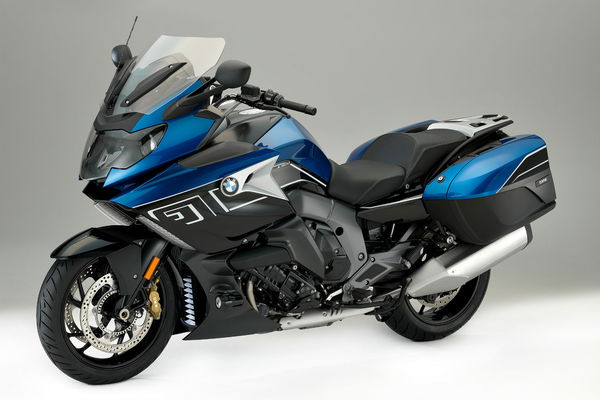
The Sport model, which is only available with blue bodywork, black engine and gold front brake calipers (as shown above) has a shorter screen. Some riders doubtless prefer it, but as I’m tall I was battered by noisy turbulence when I tried it, even with the screen on its highest setting. Thankfully I soon had a chance to switch back to an LE with standard screen (below), which was much quieter when fully raised.

The GT was also impressively protective, even managing to keep me almost completely dry when we hit rain on a fast main road. On a cold day I stayed pretty warm, too, thanks to the BMW’s efficiently heated grips and seat. Both are five-way adjustable via a click-wheel, which also controls the sound system and satnav. The pillion gets a heated-seat control too.
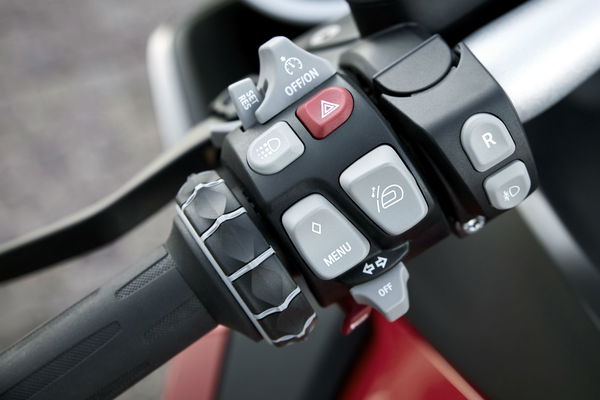
BMW’s six-cylinder express felt refined and comfortable as we swept along the Almeria coast road, that wonderfully powerful, flexible motor sending it creaming forward with every tweak of the throttle, and the quick-shifter adding to the sense of effortless speed. The strong mid-range gives you the option to short-shift through the box but the engine is so addictively smooth at the top-end that I normally ended up giving it plenty of revs, wishing the exhaust sound could be a bit louder.
Handling was very good for a long bike that weighs more than 330kg with fuel and panniers. The BMW was stable on the fast sections, and with its suspension in Dynamic mode cornered with a respectably firm and well-controlled feel. The semi-active system adds damping at the rear under acceleration, or in the forks when using the linked brake’s powerful four-piston front calipers.
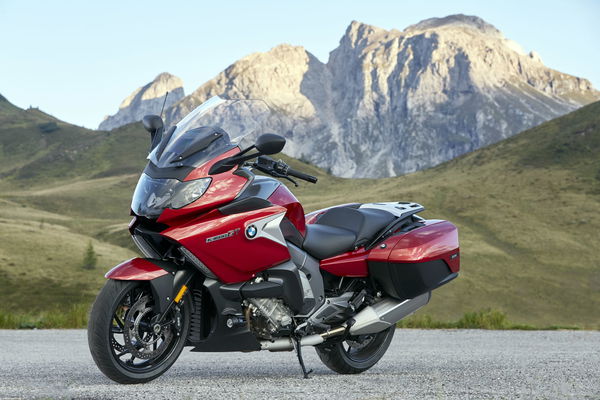
The Intelligent Emergency Call feature is a variant of a system that some of BMW’s high-end cars have had for more than a decade. It uses the bike’s built-in data sensors to detect when it’s involved in an accident, and automatically dials BMW’s call centre for help. Thankfully it didn’t have to be deployed on the launch ride.
Depending on how severe the accident is judged to be, the call centre contacts the emergency services or rings the rider via the bike’s in-built speaker. If there’s no reply the services are alerted.
The rider can also press the SOS button on the right handlebar to report a third-party accident.
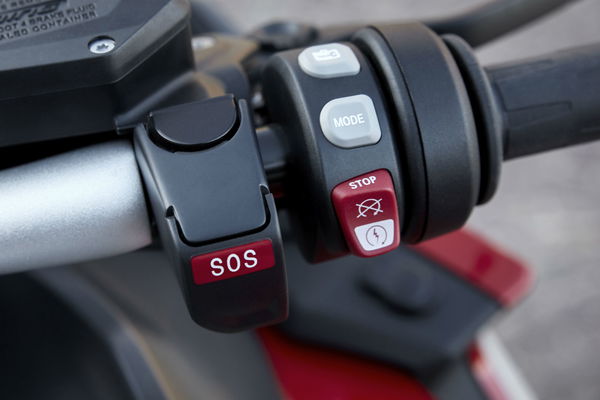
It’s a clever system. It’s just a shame that, although it’s live in some European countries immediately, it won’t reach the UK until September, and can’t be retro-fitted.
Until then, the K1600GT remains a slightly more refined version of the machine it’s always been: an intoxicatingly fast, respectably fine-handling, impressively comfortable, inevitably expensive sports-tourer with an addictive six-cylinder character.
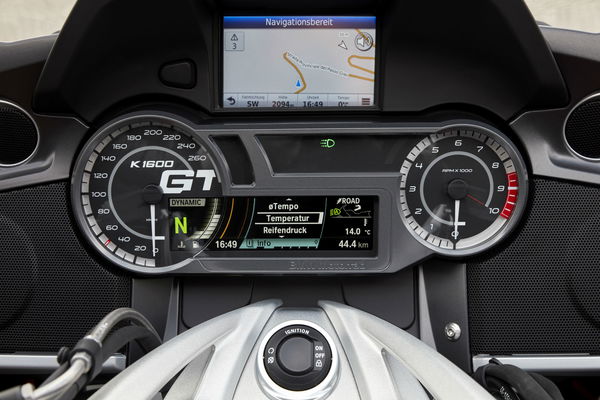
Models tested: 2017 BMW K1600GT LE and Sport
Price: K1600GT LE £20,045, Sport £19,085 (standard GT £17,205). Bikes tested also had £250 Keyless Ride, £375 Gear Shift Assist Pro, £380 central locking and £340 LED fog lights.
Engine: 1649cc in-line-six
Power: 160hp
Torque: 129lb.ft
Wet weight: 334kg (with panniers, 90 per cent full tank)
Tank capacity: 24 litres
Seat height: 810-830mm
Available: now
Photos: Markus Jahn and Jörg Künstle
Sponsored Content
Latest Reviews
More Reviews


